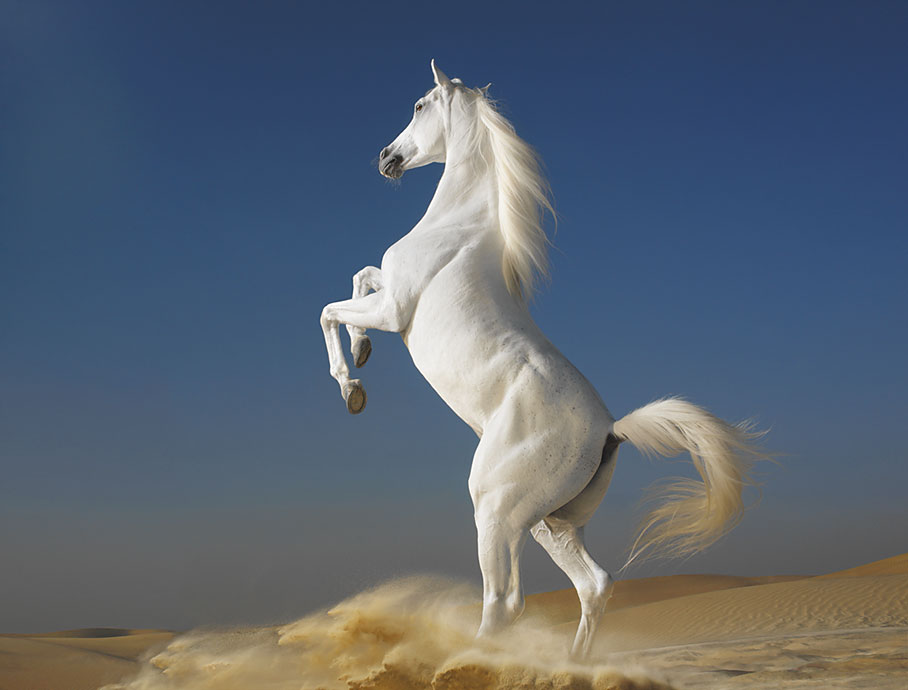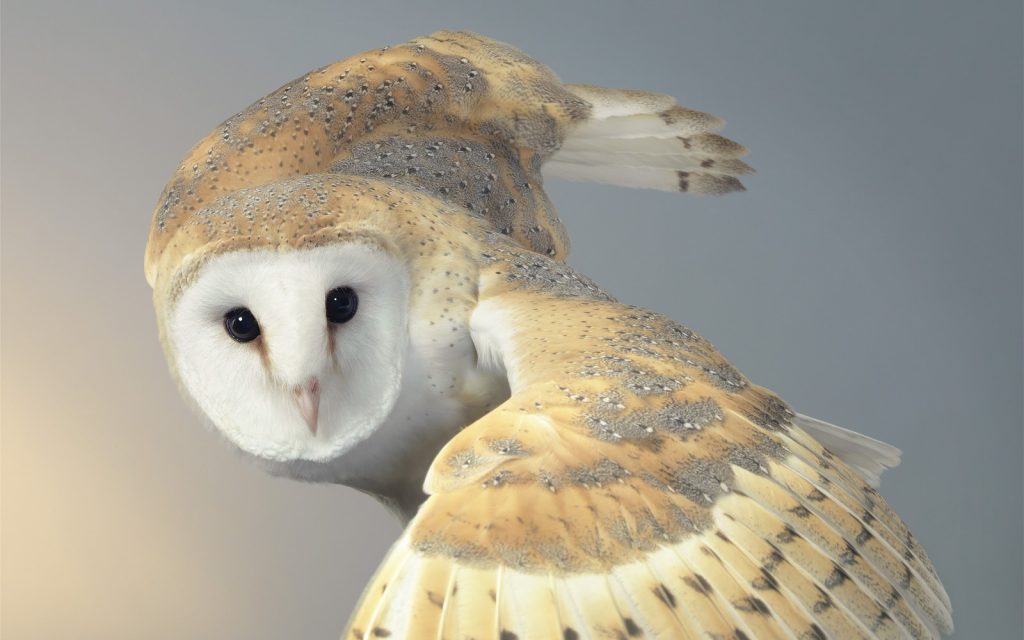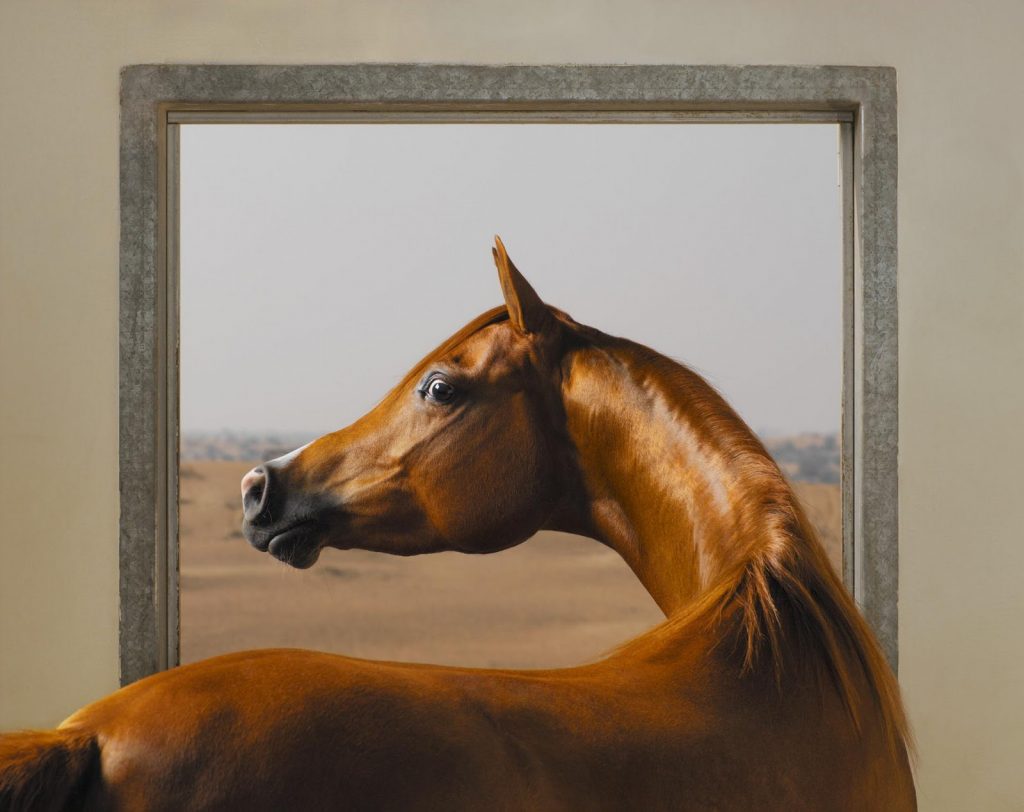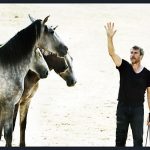When the London based photographer, Tim Flach, came out with his lavish tome, ‘Equus’, he was compared to some of the greatest equine painters of our times. Modest and unassuming, horses are just a chapter in Flach’s career, though they were always a part of his life.
By Camilla Alfthan
”BOTH MY PARENTS were passionate about horses. My father played polo, just as my brother, and my mother used to hunt. It was very much part of my growing up,” tells Tim Flach during our conversation about horses and photography. Famous for his arresting images of animals Flach’s studio is far from the Noah’s Ark that one might expect. He only has two cats and he never really went riding.
“I was just a child trying to do things told by my step mother, mucking out and cleaning the stables, strewing them the hay; that physical kind of connection. I was that kind of generation where the kids weren’t given too much opportunity, I was just there to help out. I wasn’t given riding lessons or any of that sort but I always enjoyed being around the horses. I think they are very sensitive to the energy around them and I think that I’m fairly quiet and fairly neutral and I have great respect for them.
The people we rented our house from had a large library with images. The lady there was a world renowned botanist, so seeing all these wonderful creatures and the combination of being on an estate that had a lot of forest all affected the outcome of what I did.”
A race horse at track work before sun rise.
HORSES IN HISTORY
”One thing about photographing horses like the halter horses and the wild horses that I did so many of in Mongolia, is that it’s not necessary to ride them to be observant of them. There’s a difference between riding the horse as a pleasure horse and the history of the horse which is a lot less sympathetic to the animals’ interest.
We think of pleasure horses as extensions of pets. But they were used in situations where people would wear a horse down as they do a car today. So the sentiment we have today is hugely different than a generation back. Horses are so deeply rooted in our culture with the the paleolithic case of Portugal and Spain. If we look to art so much is related to the equine subject because they were hunting the horse for food but they also knew the anatomy of the horse better than we do because they were dismantling it and using every part. Then equitation came about from the Corinthians to the Athenians..
If you’re interested in culture you cannot separate the horse and us. It’s such a deep heritage, so rooted in our history.
Today you don’t see it so much in modern art and that’s a huge change. And yet our language is still peppered with equestrian references whether we’re talking about horse power, or whatever; we’re constantly using words that are linked to the equestrian universe. We almost forget it as it is such an important part of our language.”
The horses of the vikings still roam freely in Iceland.
AUTHENTICITY
”Today, we’ve got more understanding of animals than ever before. We can watch rhinos at night, a hunting sequence of wild dogs until the final kill from some micro light. We know animals better than we virtually ever have before. But, in actuality, we have never been more separated.
We know animals better than we virtually ever have before. But, in actuality, we have never been more separated.
It’s a a conumdrum that may come to haunt us because as we separate ourselves from the horses in our mechanistic lifestyles who knows what it sets up? And because it is all happening so fast we can’t know the consequences of it.
My seven-year old son going to the i-pad and not integrating socially as much as previous generations would have done to go off and play football…We don’t know the consequences of this.
In that sense, the role of the horse is not much different than before. Racing hasn’t changed much. It’s about pleasure that changes the dynamics. There’s the whole thing about the health benefits of owning a dog, or having that sense of freedom that a horse might offer.
There’s a general shift in our understanding of animals in our space.
We’re going through these changes that are unique to our generations. I don’t want to sound moralistic but certainly there are many challenges out there.”
From Tim Flach’s latest book ‘Endangered’.
EQUUS
”When I made my Equus book I decided I’d rather look at the horse than the culture around it, the people elements which are a totally different matter. Though the different breeds of the horse have become cultures in the sense that we shaped them.
We were quite responsible for why we’ve got a chihuahua and a Great Dane and like we speak of genetics, we do shape the form of the horse according to the functions we need them for.
Those who did not suit us like the Przewalskis were pushed away to the Gobi desert. Even the wild mustangs are managed in some way. When they capture them they will release stallions that they want to breed and cull others that are less commercially of interest. When I went to the round ups they put back stallions with nice colour marks.
The dish of the Egyptian halter has become more exaggerated. In the Haflinger story, I went to were the best breeding place. They were quite dark over a hundred years ago and now theyre quite pale because they’re breeding them for aestetics rather than for function. They are still very effective for the mountains, but more to take a tourist up to the mountain than work for a farmer. So my images show how the horse was desired in 2007. In another 50 years it may have moved on again.
I felt the horse was so deeply rooted in our country that I wanted to explore it. Once you start such a journey you trip over things that are interesting. So the question was who would represent the different types of horses and their roles. As a progenitive to a lot of breeds was the Arabs, so I’d start there, and that gave me a lot of opportunities but I also wanted a general overview and represent certain areas.
I was playing it by inquiery of what people would tell me and some of it was led by an overview.
I tried to cover all the areas that I thought would represent the Arabian horse. I wanted to go back to where the horse came from, rather than photograph it in Poland or Sweden, though, ironically, the bloodlines have come back recently from Europe. The way the horse was formed by the desert, its hooves..I wanted to show that and it felt right. I wouldn’t photograph a poor Shetland pony in a hot climate where they have all sorts of challenges given their double coats.”
FRAGMENTS OF TIME
”One of the roles of photography should be to extend the experiences around the subject matter. That could be several different respects. It could just be geographical. Who would go to Shetland to see the pony, or who would go to Norway and see a fjord horse? So that is one thing; to show evidence of the landscape that molded the shape of those breeds.
The other thing is sometimes to show details that you couldn’t normally observe – catch a movement to suspend a moment in time. It might be looking at a horse shaking and the way the hair moves. It could be a horse jump – or in the case of the Arab going down the track, you can observe the way the bit is in the mouth. Certain details because it is captured.
But it is also the idea of the stylization. I’m not trying to compete with event photography but to shift the experience which, ironically, because it is shifting away from the familiar, engages you.
So photography’s role should be to engage the viewer by fragmenting a moment of the time or simply the detail that can be brought through.”
Dogs followed Flach’s equestrian tome.
GOING OUT AND SHOOTING IT
”I normally pick my subjects and I may have four days to do them, and then I distill it down to a few images so it explains something. So if I go away to India to do the Marwari horse, I want to show its ears and a few other details that explain the uniqueness of that breed. So whether I go to Rajasthan or just outside London I have to limit it in practical terms.
I probably shoot two or three pictures a day that I end up using. Sometimes six pictures a day or just one.
I can’t afford the luxury to not use them at all. There might be occasions where I’d like to go back and revisit to take it further but not often. It’s not like I shoot thousands of pictures and only select a few, I kind of home in on what I want to do.
My advertising background may have influenced me in the sense that I need to come back with something. The fact that I use flash means I can overcome some of the elements that may have stopped me. I could have a grey day and a rather dull white sky and I could light it to make it a moody sky, so I did use my technical skills to make things go somewhere. Surprisingly the horses don’t react much to the flash. I’m more concerned about flapping or something behind them that they cannot see.
In Mongolia it was just myself and a guide. In the fjords I went alone. I’d been there in the winter, picked my routes because it would be difficult to get around. In Iceland we went with Animal Planet and we had to cover quite a lot of ground without any production, so I took quite a few people out there. Usually I’ll go with one assistant on most of the jobs. But then when we went to a place like the Emirates a lot of people voluntered to try and corral the horses so you end up with a dozen people for the day who help out, who are linked to the yard or friends of friends.”
Rearing in the desert.
CREATING YOUR OWN EXPERIENCES
”Favorite photographs and favorite times don’t usually link. I remember being with one of the cousins of the maharadja in this crumbled down palace having tea. In Iceland looking at the midnight, photographing horses through icebergs. The cowboys in the Rocky’s having breakfast. Walking 50 miles a day in the Hustai National Park chasing the Przewalski horses because there were no roads. I have different memories not always related so much to the actual pictures.
I think you have to be up for the adventure because that’s part of it all. To create your own experiences that you want to have and allow the opportunity to find new things, really. I so enjoyed meeting the people. Once you start aquiring the understanding it’s great sharing that passion and interest with the people that are passionate about what they do. I always found that electric – being around people who have a passion about something in their life. I always found that so exiting and rewarding.
I found myself talking and having a great time with some sheikh who had to go off to rule some other country in the afternoon; or talking to someone about a trotter, it’s just quite surreal, because it gives you an entry to so many different people that you wouldn’t otherwise have a reason to meet.
I love that chance to be able to meet and have a common ground with people from all over the world and to share something. I was accepted because I shared their passion.”
PEOPLE’S PERCEPTIONS
”Instead of differences I found communalities, they all felt their horse was the oldest and purest. Everyone wanted in a sense to claim their right to a uniquess of their breed. They were so proud of it and of the exponents of their virtues.
When I work with people I like to hear their thoughts about the pictures I take as it is from there that I start to learn things.
I’ll ask someone; ’Tell me what it is that you look for in your Arabian show horse’ and he’ll say; ’I want to see a kind eye, I want to see a muzzle that will fit in the palm of my hands. I want to see the crested neck.’
I ask the question rather than assuming because I dont have much knowledge. So it’s great to hear it from those people who were passionate.
What they desire and what it is that is special to them. If I’ve got to touch other people I’ve got to be interested in what is it that others will ressonate with when they look at those pictures.”
INTIMACY AND UNUSUAL ANGLES
”As an owner of a dog or a cat you have that proximity, you’re much closer. That intimacy – I hope my abstracts create that ambiguity, that they leave a space as well.
In my book, I tried to show the horse in it’s environment, and also, I didn’t show any tack because I wanted to show the horse without making too much reference back to humans.
The horses that wore masks and helmets after anesthesia were more about showing a history and an investment in the horse. The utilizing of the horse, war fare. They’re also ambiguous. I like the fact that you don’t know what it is, the head protector – it looks like he’s going into a boxing ring.”
DEBATES AND WONDERMENT
”There’s definitely a migration of words to images.
Ironically, we started with images from our experiences, and then word became the abstract symbol to interpret it, and now we’re not of the sensuous side of it anymore, we’re going back to images as a kind of idiom that suits the communication age.
Some territories are breaking down where language might get in the way. Though context sometimes is lost and words are needed.
In my early images there was a neck of a horse which was like a mountain. That resonates with me today. I recently had a series published by Stern, and I reworked an image with the knowledge I have now. My skills have moved on since I did Equus. I’m much more able to manage images in different ways so my images are much improving because of that. I feel like I’ve moved along quite a long way since then. I could reinterpret anything I shot.
The photo of the horse in the window in the stable still works for me. The embryo series still are among the images I find interesting. I think when you see it you know the potential. You don’t know until you find it.
The questions is what we do with our continuous isolation from place and nature, and what that sets out in the future.
Pictures are interesting when they bring up different debates. One thing is the wonderment of the horse, and the fact that embryos follow certain patterns similar to other species. So day 35, the embryo almost looks like a human baby. At another level, it points towards the management of the horses, particularily in Arabians or polo ponies, the fact that most commonly transferable single embryos are horses or humans.
It brought up economic debate as well as ethic and the wonderment of the horse. When you get to that they become more interesting. I think my interest has moved in the years since I was doing Equus.
What I find interesting is those debates about how we manage animals. The perceptual questions about what they understand about us.
The questions is what we do with our continuous isolation from place and nature, and what that sets out in the future. The relationship we have with animals is continuous and something you cant just change in a few generations. The being around animals.
But we are definitely visiting a new period which is very unusual in our history, where populations are huge and we’re reaping our planet on a scale never seen before.
As humans we’re always a derivative of what we take. We can look at nature wishfully and be inspired by it.
Wonderment is very important. I’d like to make images where I catch a meaning with it for a museum where it can be considered. Voices to bear on people out there who are more knowledgeable about this than I am.”
HORSES AND HERITAGE
”Every country has a horse that is very symbolic of their country. And people are passionate about preserving it as something that represents their heritage, whether it is agricultural or something else.
My interest and structure has become more and more inspired by painters and my compositions have changed quite a lot.
It’s quite an honour to be compared to Stubbs, I appreciate his commitment. He spent a lifetime making his works. But it is nice to know that I’m part of continuing this culture of imagery around horses.
I think I tend to look broadly at this culture. The horse in the window with the chestnut coat – I was very much conscious of George Stubb’s Whistlejacket that was an influential painting.
Initially, I wanted to go out in the open where you have the falcon and the camel, the saluki and that whole historical link, to look at that heritage, but because of some events where the horses were moved around in the royal yards, they didn’t have them.
If I’d done what I wanted to do I could have gone on a few more years. I feel I only touched on it. Equus represented a period of two years when I was doing others things, and there were some images that went back some years. I’d love to have spent more time and done something more serious.” ©










